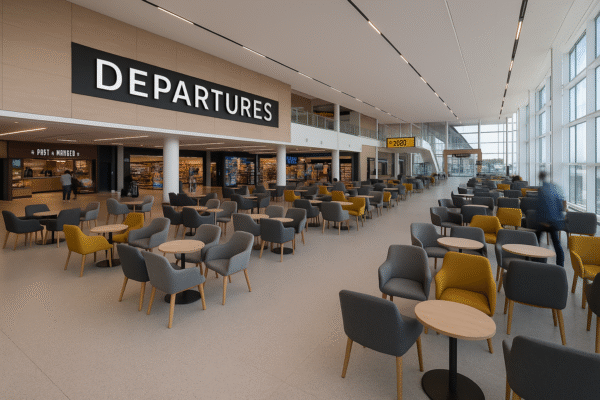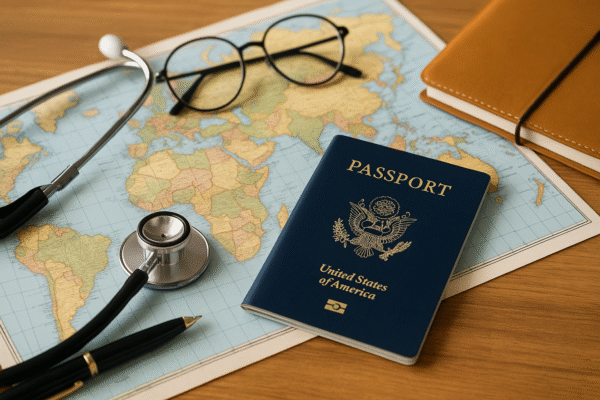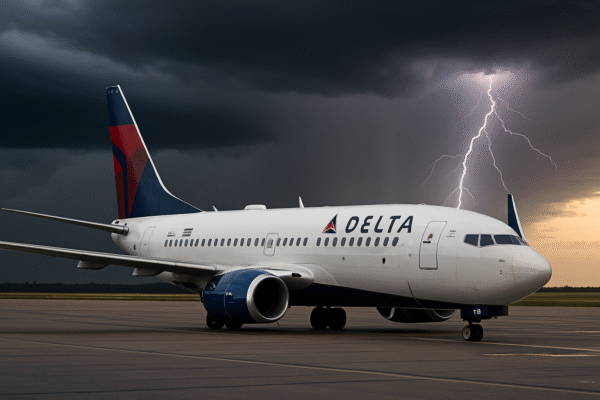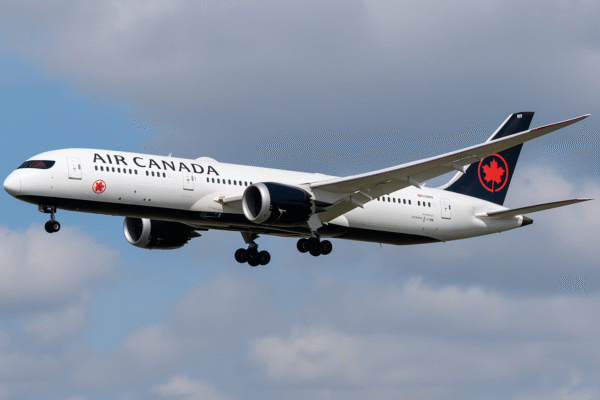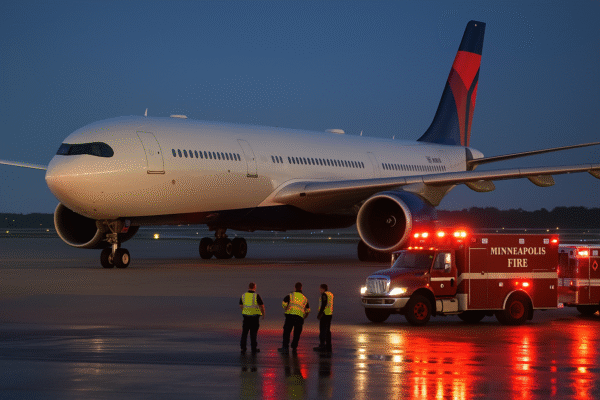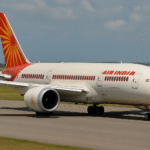Delta Amsterdam-Bound Flight Hit by Severe Turbulence, 25 Hospitalized After Emergency Landing in Minneapolis
Salt Lake City, USA – A Delta Air Lines international flight en route from the United States to the Netherlands faced a terrifying mid-air emergency on Wednesday after severe turbulence injured dozens of passengers. Delta Flight 56, operating on an Airbus A330-900, was diverted to Minneapolis–Saint Paul International Airport (MSP) following intense atmospheric disturbances, resulting in at least 25 passengers being hospitalized.
The transatlantic flight departed Salt Lake City International Airport (SLC) on July 30, 2025, bound for Amsterdam Schiphol Airport (AMS), carrying 275 passengers and 13 crew members. At cruising altitude, the aircraft encountered sudden and violent turbulence over the Midwest, which caused the aircraft to lurch without warning, sending unsecured passengers and crew into overhead compartments and aisles.
According to a Delta spokesperson, the aircraft was rerouted to Minneapolis as a precautionary measure to ensure passenger safety. The A330-900 touched down safely at MSP shortly before 8:00 p.m. local time. Emergency medical responders and the Minneapolis–St. Paul Fire Department were already positioned at the gate upon arrival, offering immediate aid to those injured.
Turbulence at Cruising Altitude: Sudden and Severe
The extreme turbulence occurred while the aircraft was flying at a stable cruising altitude, a phase of flight generally considered safe and uneventful. However, meteorological experts note that clear air turbulence (CAT)—which cannot be detected on radar—is increasingly impacting long-haul routes, particularly over the North Atlantic corridor.
According to the U.S. National Weather Service and the FAA, such turbulence can develop rapidly due to jet stream shifts, convective weather patterns, and climate-induced atmospheric instability. While pilots are trained to respond swiftly to such threats, the unpredictability of clear air turbulence makes it a persistent hazard for even the most technologically advanced aircraft.
Airbus A330-900 Equipped for Long-Haul Safety
Delta’s A330-900neo, a next-generation long-haul aircraft, is equipped with advanced avionics and weather radar systems designed to detect and avoid hazardous airspace. Despite the sophisticated technology, the violent jolt caught passengers off guard—many of whom were not wearing seatbelts at the time.
Eyewitness reports suggest that meal carts, unsecured luggage, and passengers without seatbelts were thrown into the air. Cabin crew quickly attempted to regain order as the captain initiated the diversion protocol and coordinated with ground control in Minneapolis.
Medical teams transported 25 individuals to local hospitals, where they received treatment for injuries ranging from minor contusions to potential fractures. Delta has not released specific information on the condition of the injured but confirmed that no fatalities occurred.
Delta Commends Emergency Response and Crew Action
In a statement released early Thursday, Delta Air Lines expressed gratitude for the rapid response of first responders and praised the professionalism of Flight 56’s cabin and flight crew. “The safety of our customers and employees is always our top priority. We commend the swift and coordinated response of our crew and emergency medical teams,” the airline said.
Delta also reiterated its policy urging passengers to remain buckled at all times when seated, even if the seatbelt sign is off. This guidance is consistent with FAA recommendations and increasingly important as extreme weather phenomena impact global flight routes with greater frequency.
Investigation and Monitoring Underway
Delta Air Lines has launched an internal investigation into the event and is working closely with aviation authorities and meteorological experts to analyze the circumstances. The National Transportation Safety Board (NTSB) and the Federal Aviation Administration (FAA) have also been notified.
Flight tracking data indicates the aircraft experienced sudden vertical acceleration consistent with moderate-to-severe turbulence approximately 90 minutes after departure from Salt Lake City. Aviation analysts note that turbulence-related injuries are on the rise globally, a trend some link to intensified jet streams and shifting weather patterns attributed to climate change.
According to the International Air Transport Association (IATA), over 65,000 aircraft encounter turbulence every year, with an estimated 5,000 passengers sustaining injuries annually. Still, aviation remains one of the safest modes of transport worldwide.
Next Steps for Affected Passengers
Delta has provided accommodations and medical support for affected travelers and has offered rebooking options for passengers continuing their journey to Amsterdam. For those hospitalized, Delta is coordinating with local health facilities and families to ensure comprehensive post-incident care.
Travelers who were not injured have been placed on alternate flights or are awaiting updates depending on medical and logistical clearances. The airline has set up a dedicated helpline and customer care service for those impacted.
Growing Calls for Turbulence Safety Awareness
The incident has reignited global discussions about turbulence safety and passenger preparedness. Aviation safety experts urge travelers to keep seatbelts fastened and store cabin baggage securely, regardless of the smoothness of the flight.
Airlines including Delta have ramped up efforts to improve cabin safety briefings, while international regulatory bodies like the ICAO continue to push for more robust forecasting technologies and global sharing of turbulence data.
As the aviation industry evolves to meet the demands of climate resilience, airline safety remains paramount. This incident, though distressing, demonstrated the preparedness and coordination of airline professionals and emergency services in ensuring minimal harm during unanticipated challenges.
For now, the focus remains on the recovery of those injured and the insights that can be drawn to prevent future turbulence-related incidents.
For more travel news like this, keep reading Global Travel Wire


